Decades of pollution and exploitation have left wildlife in the Irish Sea at risk.
That’s according to a representative from one of the 13 conservation bodies who have joined forces to form a group calling for action to tackle the problem.
The group, which includes the Manx Wildlife Trust, known collectively as the Irish Sea Network, is urging planners in all six nations bordering the Irish Sea - namely England, Wales, Scotland, Ireland, Northern Ireland and the Isle of Man - to collaborate and cooperate, for the sake of nature.
In its new report out this week, the network calls for planners to work together to ensure that wildlife is protected, as they review how the Irish Sea is used.
According to the conservation groups, the Irish Sea is coming under significant and increasing pressure from damaging activities such as industrial fishing, aquaculture, offshore renewable energy development, shipping, military activity, recreational activity and pollution.
All of these activities take their toll on marine species, that are already endangered by the impacts of climate change, the network says,
The Irish Sea Network reports that while over a third of the Irish Sea has been designated as Marine Protected Areas, as little as five per cent is actually managed for nature, and less than 0.01 per cent is fully protected from damaging activities.
This leaves the Irish Sea’s wildlife and the habitats on which they depend at serious risk, with little chance for nature to recover. As well as its intrinsic value, people depend on healthy seas because they produce oxygen, sequester carbon on the seabed, provide food security, livelihoods for local fishing and coastal communities, enable low-impact eco-tourism opportunities, and contribute to our wellbeing and culture.
Marine wildlife doesn’t respect borders – yet each Irish Sea nation is producing separate marine planning documents. Each plan will cover a huge range of uses of the Irish Sea, from rules about fishing and renewable energy to shipping and tourism.
The Irish Sea Network says all planners and decision-makers must collaborate and cooperate better and with urgency, to consider the Irish Sea as a whole, and ensure that the nature and climate crises are at the forefront during this process.
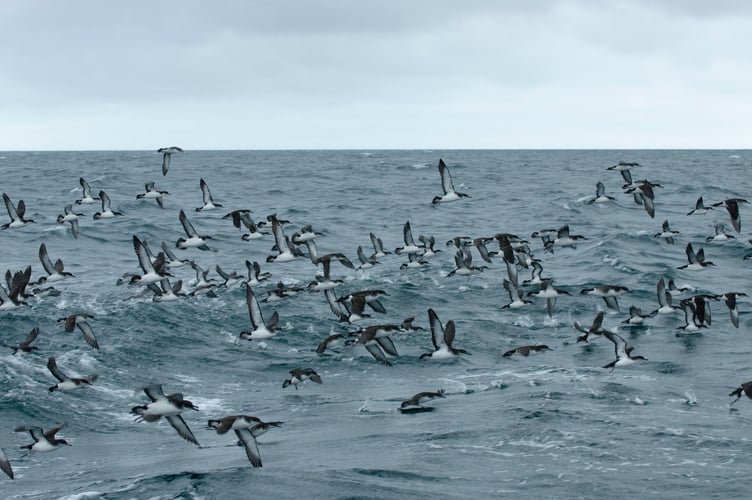
Joan Edwards, Director Policy and Public Affairs at The Wildlife Trusts says: ‘The Irish Sea is a special place, but decades of overexploitation and pollution have left wildlife here degraded and at risk.
‘As our seas are increasingly industrialised, it’s vital nations work together to prioritise nature and the achievement of net zero.
‘We need spatially explicit marine plans which aim to recover nature, ensure the sustainability of all activities and enable a just transition for sea users and communities around our coasts.’
Head of Marine at the North West Wildlife Trusts, Georgia de Jong Cleyndert said: ‘The Irish Sea is in a degraded state and under huge and increasing pressure from climate change and increasing levels of human activities.
‘More than 15 million people live around the Irish Sea and many more visit for holidays, but not everyone realises the diverse wildlife that lives there and just how important it is for biodiversity and the environment.
‘It’s home to a huge amount of amazing wildlife – giant basking sharks, leatherback turtles, beautiful starfish and jellyfish, dolphins, porpoises, seal and sharks, and is internationally important seabirds like Manx shearwater and guillemots.
‘Without protection and proper management, much of this wildlife faces an uncertain future - pollution, development and destruction of habitat could lead to a severe decline in biodiversity. But for protection to be effective, it must be done in a joined-up way.’
Georgia added: ‘Marine species don’t respect borders or stick to lines drawn on maps - they show just how connected our Irish Sea is.
‘For example, basking sharks migrate throughout the Irish Sea while cockles from all corners of the Irish Sea are genetically linked.
‘Tracking data reveals Manx shearwaters from each breeding colony around the Irish Sea will travel long distances to a shared central feeding ground.
‘Species are so interconnected, we believe strongly that the Irish Sea should be considered as a whole and urgent measures to protect nature should be taken at a cross-national level.’
All six Irish Sea nations have committed to protect and restore at least 30% of our seas by 2030 and achieving net zero by 2050.
However, the bodies warn that all of the large-scale developments and numerous activities in the Irish Sea are still putting marine wildlife and their habitats at risk.
The Manx Wildlife Trusts and its partners are now urging planners to ensure that environmental projects, such as wind farms, are put in the right places and are not sited in marine protected areas where underwater cables can damage fragile habitats and ecosystems on the seabed.
Georgia said: ‘It’s fantastic that all the Irish Sea nations have committed to protect 30% of their seas by 2030, but at the moment this commitment is not a reality.
‘We need better governance, to ensure that our already fragile underwater ecosystems aren’t put in further jeopardy. Planners need to work together, to be more strategic.
‘For example, using cable corridors, so that different cables from various wind farm developers can merge their cabling into one site, thus greatly reducing the harm to the seabed.
‘Other key areas for collaboration include moving away from fishing in Highly Protected Marine Areas to other less fragile areas, and to replace trawling methods with less damaging forms of fishing, such as using creels, as well as exploring the benefits of nature tourism.
‘Local communities, as well as the economies of all six Irish Sea nations, will benefit from more strategic and joined-up planning of our seas, as well as benefitting the urgent nature and climate crises.’
Leigh Morris, CEO, Manx Wildlife Trust said ‘85% of the Isle of Man’s territory is in the Irish Sea, and our island is positioned at the very heart of it. ‘There are important issues for Manx Wildlife Trust in relation to how our territorial waters are utilised and sustained, and how the important species and habitats within it are conserved and, in some cases, restored.
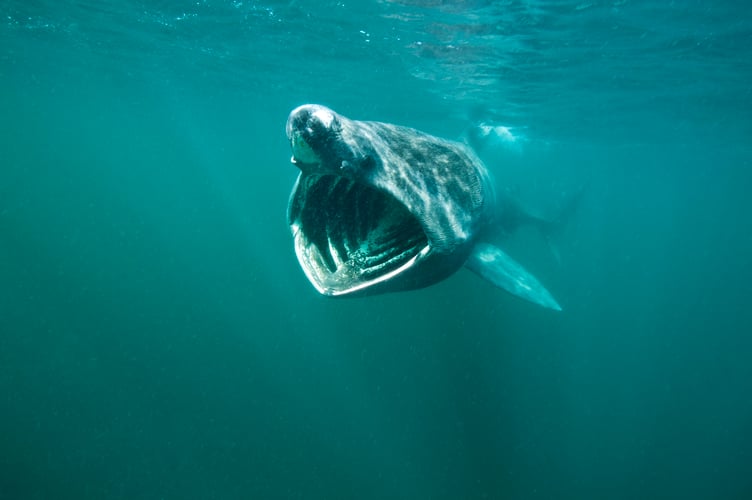
‘With discussions now gathering pace on the potential for a large off-shore windfarm in our territorial sea, the importance of a joined-up thinking with the other five nations around the Irish Sea is paramount, and we see this collaboration as a significant step forward in the creation of a Marine Spatial Plan for the whole Irish Sea.
A spokesperson for the Irish Wildlife Trust said a joined-up approach from all nations who have a stake in the Irish Sea was vital if marine habitats were to be protected.
A statement from the Irish Wildlife Trust said: ‘As we all know, nature does not recognise borders and so it’s imperative we take a cross border approach when designating areas for protection, fishing and industry in this biodiverse area.
‘With the new Irish MPA bill due to be released early this year, the knowledge sharing and collaboration within this report will make it an important tool when advocating for nature and ecosystem focussed MSP in the Irish Sea’.
According to experts, the waters around the Isle of Man is home to a variety of stunning marine wildlife.
These include basking sharks and humpback whales who have been known to wander through the ‘gap’ between the Isle of Man and North Wales.
According to the network, there is some evidence that basking sharks spend all year round in Irish Sea feeding and breeding.
Also native to the waters of the Irish sea is the Manx shearwater, a sea bird known for its haunting call and was once mistaken for witches by pirates off the coast of Wales.
They travel thousands of miles every year to nest in their hobbit-like burrows to raise one super fluffy chick.
According to experts, shearwater chicks become so big that they are not able to leave the nest – and instead, must go on a crash diet in preparation for their big journey to South America for winter.
The Irish Sea Network was established in September 2020 through funding provided by Esmée Fairbairn Foundation and the John Ellerman Foundation
Steve Trotter, CEO of Cumbria Wildlife Trust said “The Irish Sea Network is a vital partnership that brings together representatives from all six nations around the Irish Sea.
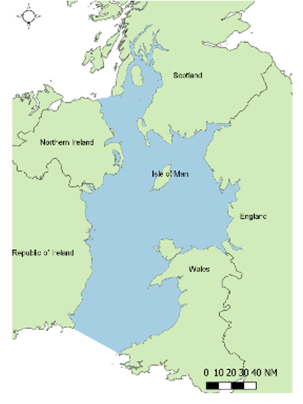
‘This report reflects an urgent need to protect and strategically manage this incredibly important, yet busy, regional sea.
‘Our marine environment plays a huge role in climate change mitigation but can only do so if it is healthy and if actions are taken to reduce and reverse biodiversity loss and protect ecologically important areas.’
Tom Burditt CEO of Lancashire Wildlife Trust (2022) said: ‘We often describe the Irish Sea as the forgotten sea, because it gets less attention than other parts of the British and Irish coastline, and because despite millions of people living and holidaying along its shores, very few of us get to see and experience either the wealth of life living in it, or the damage being done to that special wildlife by inappropriate and unregulated activities. ‘We need new ways of working in order to better manage the Irish Sea and to work in partnership with the communities and businesses living and working on, in and alongside this fabulous marine ecosystem.”
Jennifer Fulton CEO of Ulster Wildlife said ‘To overcome the impacts of biodiversity loss and climate change on the already busy Irish Sea, we urgently need a comprehensive cross-boundary strategy that has nature’s recovery at its core.
‘Safeguarding and restoring marine ecosystems must be a priority for Marine Spatial Plans, which need to be strategic, spatially prioritised and fit for purpose.
‘Together, with a resilient and well-managed network of Marine Protected Areas, we can safeguard marine wildlife and the livelihoods of the many people who depend on the Irish Sea, now and into the future.’

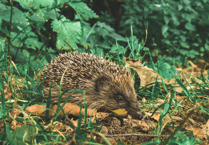
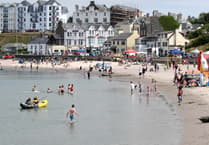
.jpeg?width=209&height=140&crop=209:145,smart&quality=75)

Comments
This article has no comments yet. Be the first to leave a comment.